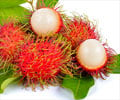Researchers have revealed that there are dramatic differences between fruit fly and humans. This revelation is directly opposite to prevailing belief that fruit flies are closest to humans.
Researchers have now developed a new way of determining the total number of interactions between proteins in any organism and the new study has revealed that humans have approximately 10 times more protein interactions than the simple fruit fly, and 20 times as many as simple, single-cell yeast organisms.The results are in close contrast to the comparisons between the numbers of genes in different organisms, which yield surprising results, like the humans have approximately 24,000 genes, but fruit flies are not far behind, with approximately 14,000 genes.
The interaction between different proteins comes before all physiological systems in the human body. A number of proteins are involved when the body digests food, responds to a change in temperature, or fights off an infection. But the total number of interactions in different organisms has not been calculated till date.
"Scientists have believed for some time that the complexity of an organism's protein interactions determine its biological complexity, but until now it's been impossible to put a number on the size of one organism's interaction network compared to another, as relatively little work has been done to identify and map these interactions," said professor Michael Stumpf from Imperial College London's Department of Life Sciences, one of the paper's authors.
Scientists have named the total number of protein interactions in the body as the "human interactome", comparing it to the human genome, which gives us our human traits.
Professor Stumpf added: "Understanding the human genome definitely does not go far enough to explain what makes us different from more simple creatures. Our study indicates that protein interactions could hold one of the keys to unraveling how one organism is differentiated from another."
Advertisement
The next step for the researchers will be to make much more detailed predictions based on careful comparisons between species.
Advertisement
Source-ANI
RAS/L










